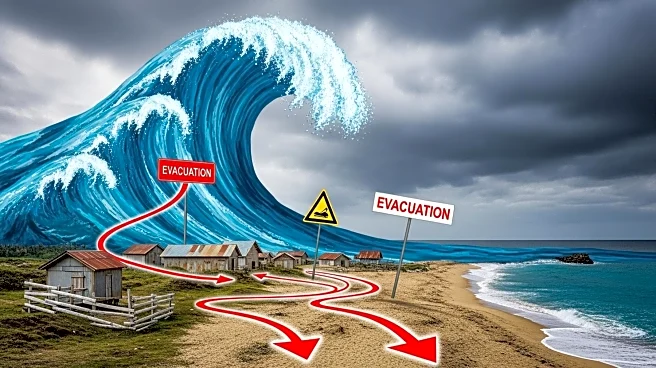What's Happening?
Two powerful earthquakes struck the southern Philippines hours apart, with the first 7.4-magnitude quake killing at least six people and triggering landslides. The second 6.9-magnitude quake, known as a 'doublet quake,' occurred along the same fault line, sparking fears of further structural damage. Both quakes prompted tsunami warnings and evacuations, with small waves detected before the threat passed.
Why It's Important?
The earthquakes highlight the Philippines' vulnerability to seismic activity, impacting public safety and infrastructure. The events underscore the importance of disaster preparedness and management in minimizing casualties and damage. The economic and social implications are significant, as affected areas may face challenges in recovery and rebuilding efforts.
What's Next?
Authorities are assessing the damage and preparing rescue and relief operations. The potential for aftershocks and further structural damage remains a concern, necessitating ongoing monitoring and support for affected communities. The government and volunteer groups are likely to play a crucial role in providing aid and ensuring safety in the aftermath of the earthquake.
Beyond the Headlines
The Philippines' location on the Pacific 'Ring of Fire' makes it prone to frequent seismic activity, necessitating robust disaster response strategies. The cultural and social resilience of the affected communities will be tested as they navigate recovery efforts. Long-term implications may include increased focus on infrastructure resilience and disaster preparedness.










